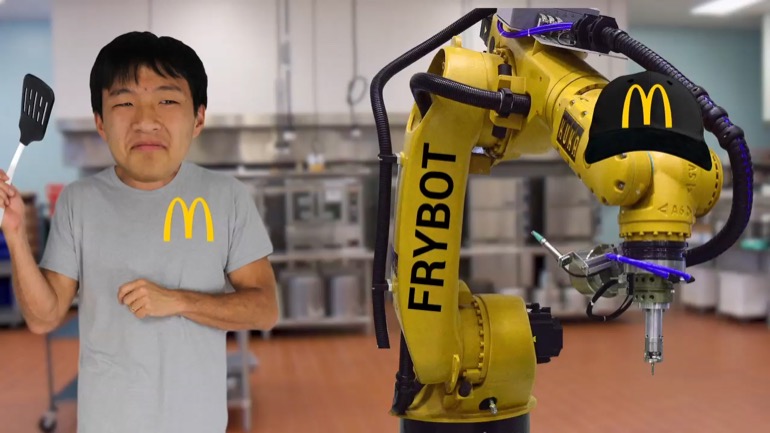ShmoopTube
Where Monty Python meets your 10th grade teacher.
Search Thousands of Shmoop Videos
Econ Videos 79 videos
What is a Production Possibilities Curve? The Production Possibilities Frontier Curve (PPF) is a statistical graphic curve that depicts the compari...
What are Income and Substitution Effects? Income effects reflects the increases or decreases in total consumption of goods and services in proporti...
How Do Companies Add Value? Companies add value by improving the client or customer experience. This can be achieved by offering better quality ser...
Econ: What is Money Supply? 4 Views
Share It!
Description:
What is Money Supply? Money supply references the total amount of liquidity, inclusive of currency and other liquid instruments, such as money market accounts, savings accounts, etc. Management of money supply is crucial as oversupply can cause inflation while under supply can cause stagnated economic growth and productivity.
Transcript
- 00:00
And finance Allah Shmoop What is the money supply the
- 00:07
money supply Well it's the supply of money Yeah Thank
- 00:11
you everyone Good night All right We'll go to a
- 00:13
bit more detail here first Let's define the money Part
- 00:16
of the money supply will Money is the liquid financial
Full Transcript
- 00:20
stuff moving around the economy And it's also all those
- 00:23
coins back Your couch Yeah it's liquid money And no
- 00:26
we don't mean liquid like these things We mean liquid
- 00:30
like these things Yeah Ching Well money is cash no
- 00:35
bills and coins and easily liquid lee sellable financial instruments
- 00:39
that can get turned into cash very easily So what's
- 00:43
money again Well the seven bucks you have in your
- 00:45
wallet it's the sixty eight cents in change in that
- 00:48
couch cushion right there Yeah along with a gun And
- 00:51
it's one hundred twelve dollars Forty five cents in your
- 00:53
Bank of America checking account Yeah that's counted his money
- 00:56
to its liquid You could just sign a piece paper
- 00:59
put the numbers on it and turns into catch value
- 01:01
due right away So that's what we called money is
- 01:03
in money supply We add up the stuff and everyone's
- 01:06
while in their one's couch cushions Everyone's banking accounts and
- 01:09
plus a few other types of accounts that quickly get
- 01:11
turned into cash like money market accounts at a brokerage
- 01:14
stuff like that And you've got the money supply in
- 01:17
the economy That's it Well there are a few different
- 01:19
measures of the money supply M one m two an
- 01:23
m three sounds like a list of promotional James Bond
- 01:27
bosses But no they're different That's different him Their economic
- 01:30
statistics put together by the Federal Reserve to track the
- 01:33
size of the money supply helps them kind of think
- 01:37
about what policies they want to implement We'll em One
- 01:39
is the most narrow definition It only includes the amount
- 01:42
of currency in circulation plus things that can get turned
- 01:45
into currency almost instantly You know stuff like traveler's checks
- 01:48
and the money and checking accounts Stuff like that Well
- 01:51
em to then includes all the stuff in M one
- 01:53
plus the money and things like savings accounts And while
- 01:56
some money market accounts that kind of stuff then we
- 01:59
have M three but includes all the above stuff plus
- 02:01
some long term deposits like you commit to putting five
- 02:05
grand and your savings account of Bank of America You
- 02:08
can't withdraw it early or you pay a big penalty
- 02:10
So that's kind of a long term deposit You get
- 02:13
a little bit more interest in return for being ill
- 02:16
liquid for six months So all those numbers those dollars
- 02:19
are included an M three But well guess what It
- 02:22
got expensive to track him three And now they're federal
- 02:24
Cut the budget and Fed just doesn't track him three
- 02:27
anymore Over time the Fed noticed that money supply measures
- 02:31
really didn't relate a strongly to economic performance as they
- 02:34
once did like thirty forty fifty years ago Well the
- 02:37
process started in the eighties and by two thousand six
- 02:39
the Fed decided that tracking M three as well you
- 02:42
know more trouble than it was worth Well the feds
- 02:44
still tracks and wanting him to though uses those stats
- 02:47
less and less than it used to mean ing away
- 02:50
back in the twentieth century for making policy decisions Yeah
- 02:53
anyway in two thousand eighteen M one set at about
- 02:56
three point seven trillion dollars an M to it about
- 02:59
thirteen point nine trillion noticed How much bigger M too
- 03:02
is an M one Okay so that's the money part
- 03:05
of money supply But what about the supply concept here
- 03:08
Well the basic concepts of economics are all about supply
- 03:11
and demand Right But when we think of supplying the
- 03:13
man we think of the supply and demand of a
- 03:15
product There's only so much triple ripple chocolate peanut butter
- 03:19
ice cream in the world that's supply or the supply
- 03:22
of it Four hundred ninety two million pounds That's it
- 03:24
Well there are many people who think it's the best
- 03:26
flavor and want to eat it by the gallon That's
- 03:29
demand Those air people are willing to pay four bucks
- 03:31
a gallon for it or whatever cost not supply then
- 03:34
meets the man How do you dio and you get
- 03:36
a price But notice something about that price That price
- 03:40
here Well it's given in money There's a second supply
- 03:43
situation going on in any price The money supply You
- 03:47
know how your great grand parents will say things like
- 03:49
when I was your age and ice cream cone cost
- 03:52
a quarter It's not that they used to eat little
- 03:55
itty bitty tiny ice cream cones Things used to cost
- 03:58
less at least in nominal terms like it took less
- 04:01
cash to get stuff fewer pennies like back then Penny's
- 04:05
actually matter And that didn't have anything to do with
- 04:07
the supply or demand for ice cream It had to
- 04:09
do with the supply of money For as long as
- 04:12
most people can remember while things have been steadily getting
- 04:15
more expensive right or at least more dollars to buy
- 04:17
stuff that's inflation The value of a unit of money
- 04:20
like the dollar has gone down because well there are
- 04:23
more of them more units of money floating around making
- 04:26
things more expensive more supply of money Things cost more
- 04:29
in terms of the amount of dollars But we also
- 04:32
earn Mohr you know in terms of the amount of
- 04:35
dollars right Like a good wage a hundred years ago
- 04:37
was like a dollar an hour maybe a dollar a
- 04:39
day and today it's like a dollar a minute Go
- 04:43
to see your dentist Been there done that Well that's
- 04:45
why when you compare prices or wages with the past
- 04:49
you have to use an inflation adjusted figure right You
- 04:52
want to measure the buying power of a particular dollar
- 04:55
otherwise things in the past always looked really cheap right
- 04:58
Like we might talk about things in nineteen seventy two
- 05:00
dollars Yes we're kind of anchoring the notion of the
- 05:03
money supply itself Released how valued that money was alright
- 05:07
Recap time Money supplies the amount of cash in an
- 05:09
economy along with certain financial instruments and accounts that get
- 05:12
turned into cash pretty easily The Fed measures money supply
- 05:16
of U S dollars using m one m two They
- 05:18
used to have a thing called them three but no
- 05:20
BMWs driving that around now And the money supply comes
- 05:23
into play in the way prices air set When buying
- 05:26
something you have the supply and demand dynamics of the
- 05:28
product you're looking to buy But you also have the
- 05:30
amount of available money Yeah which goes into the price
- 05:33
of things as well That's it Enjoy your fudge ripple
- 05:36
there Well count coins
Related Videos
GED Social Studies 1.1 Civics and Government
What is bankruptcy? Deadbeats who can't pay their bills declare bankruptcy. Either they borrowed too much money, or the business fell apart. They t...
What's a dividend? At will, the board of directors can pay a dividend on common stock. Usually, that payout is some percentage less than 100 of ear...
How are risk and reward related? Take more risk, expect more reward. A lottery ticket might be worth a billion dollars, but if the odds are one in...



















































































